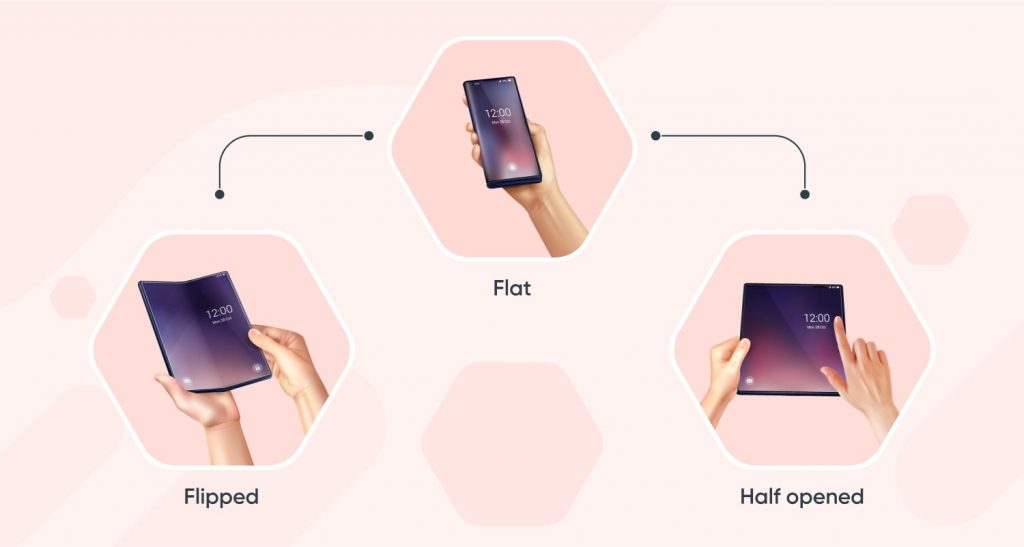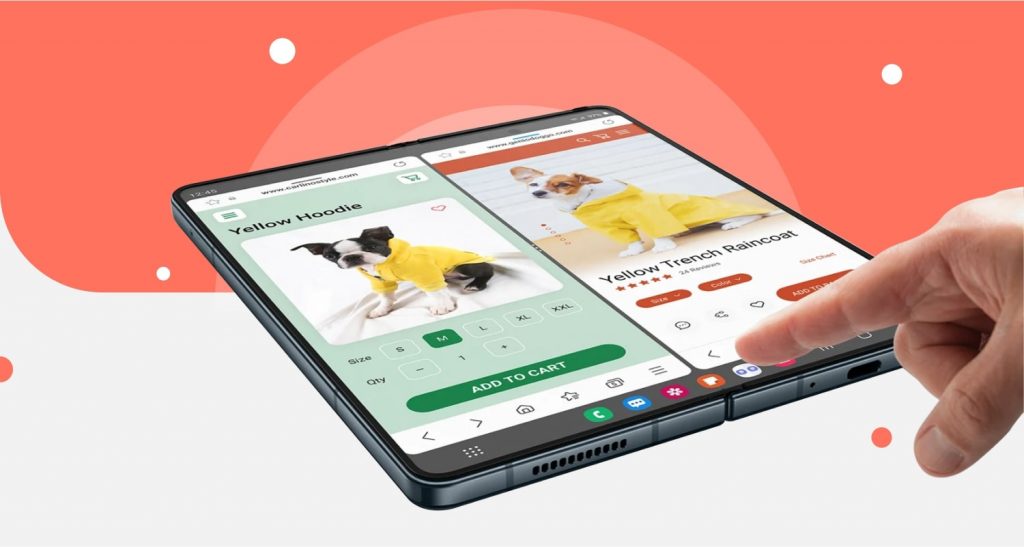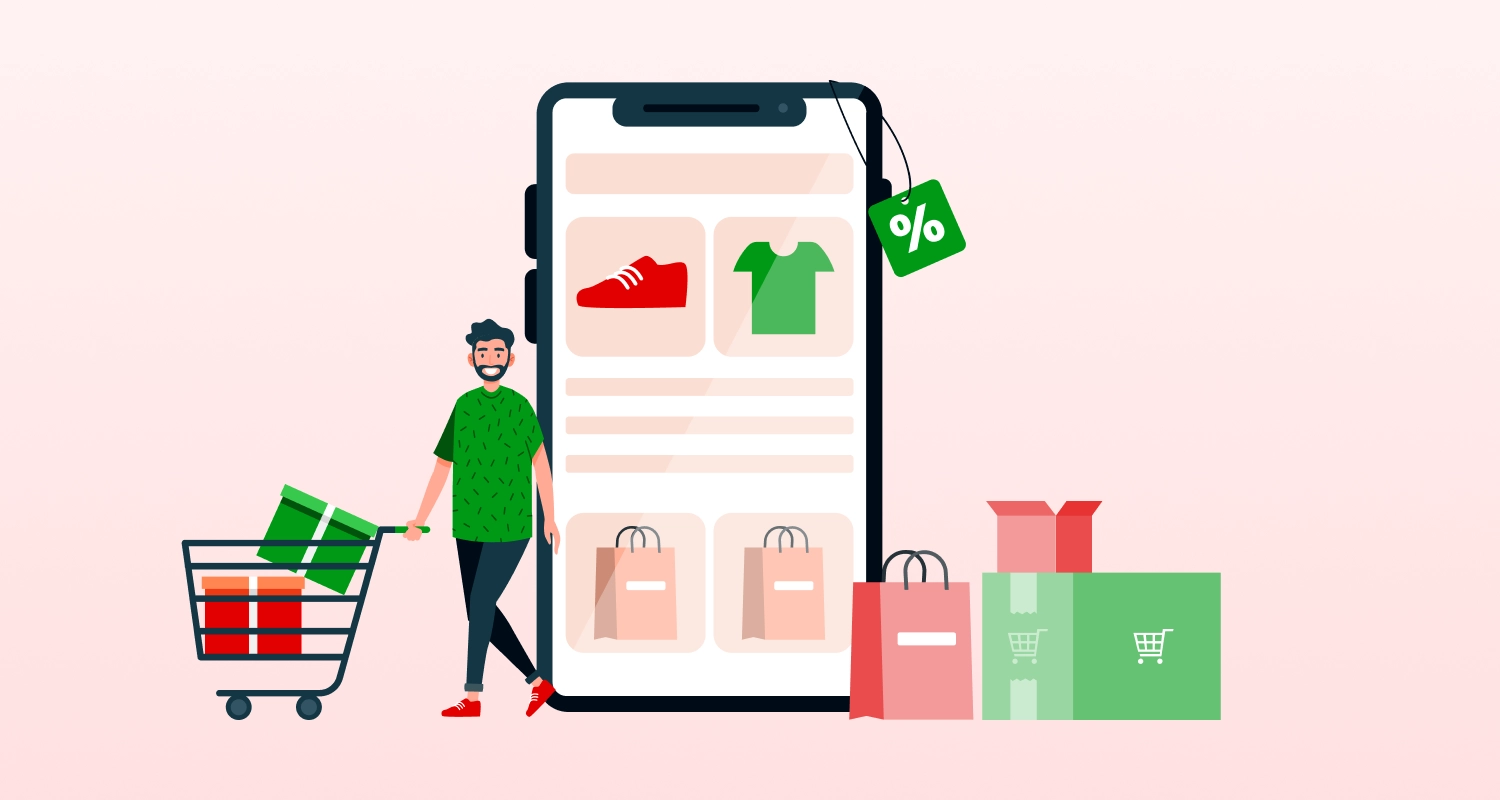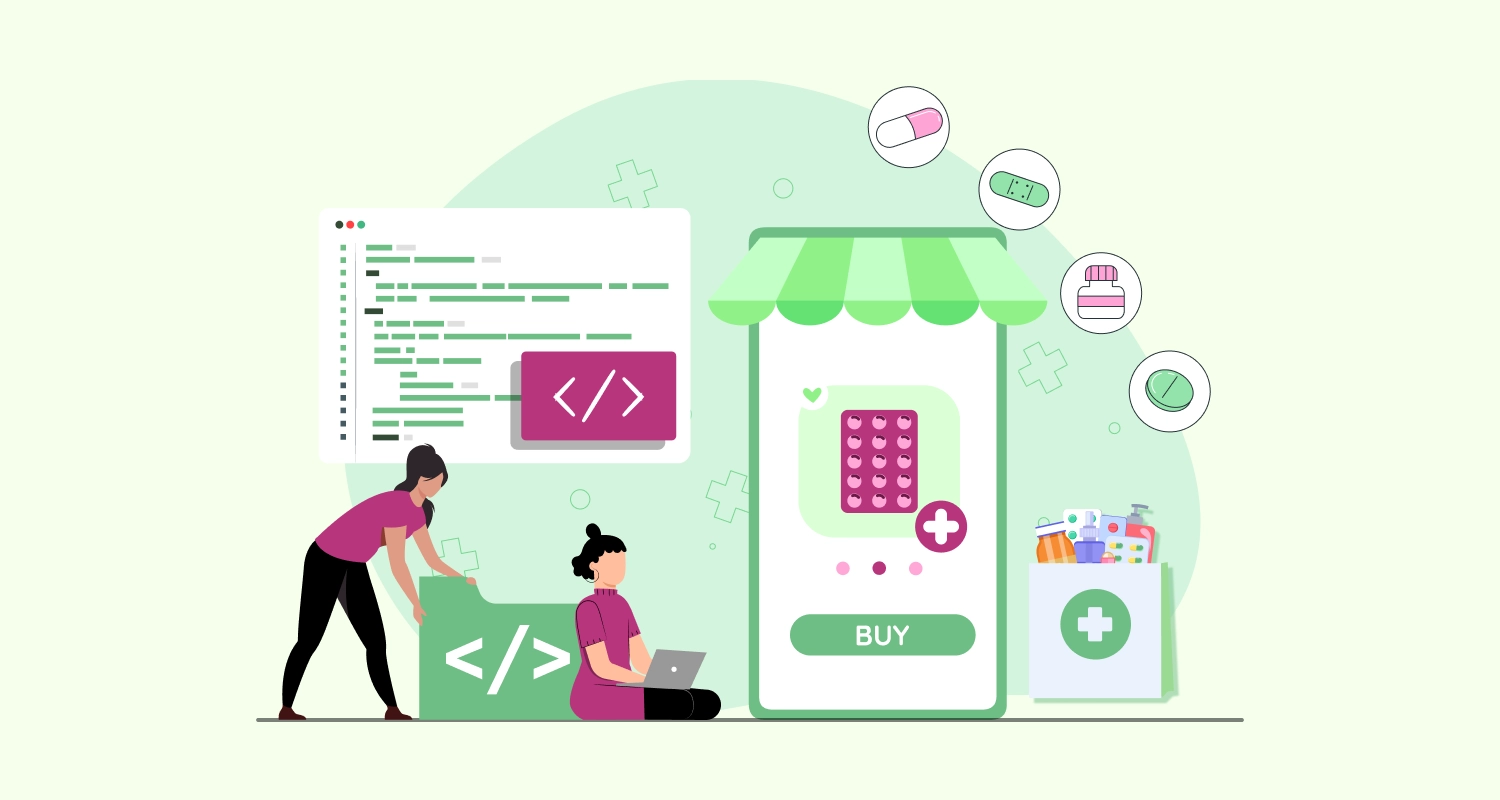There are presently 6.5 billion smartphone users worldwide and the numbers are to be expected to increase upto 6.8 billion users by 2023. As we move towards new tech, the demand for foldable devices is increasing exponentially.
After Samsung debuted the Galaxy Z Fold in 2019, the market saw the introduction of a new player. This completely unique and distinct design has arrived to interrupt the monotony of conventional smartphones. Will foldable gadgets displace contemporary smartphones? Everything is dependent on how well they perform. Time will tell. For the time being, we will observe how things grow and consider how we may become a part of the trend by designing some fun items for foldable devices.
If you want to stay on top of the newest trends and breakthroughs, now is a fantastic moment to start investigating the new technologies underlying Android foldable. The industry has progressed beyond traditional smartphones. While having a smartphone with the best features used to be enough to please the masses, consumers today expect more. In this article, we will discuss how to develop mobile apps for foldable smartphones. We will also discuss some of the aspects of foldable mobile app development services.
What are foldable devices?

The phrase “foldable device” first appeared in 2008, when Nokia launched the Morph idea. The availability of flexible OLED displays that may be folded into a double-size full-screen display is a distinguishing feature.
Foldable devices provide customers with a more immersive and enjoyable experience. The Samsung Galaxy Fold, which is now available for purchase, is the most visible example of such a device. However, the tech is expected to gain popularity among smartphone and tablet manufacturers.
How does this design impact app development?
As this new innovation has taken the world by storm, developers are thinking of new ways to make foldable smartphone app development less complicated. While foldable technology appears to be interesting to users, there is no clear knowledge of how it will affect mobile app development. The technology has already had a significant impact on the industry, with several businesses researching the new technology.
Let’s have a look at some of the improvements and advantages that foldable smartphones provide to app development:
- Extra screen estate: The fundamental concept behind foldable gadgets is to provide consumers with an interactive experience by utilizing a huge screen. The foldable technology combines two screens into one large one.
- Small size: Users must now pick between a small form factor and a large screen. They receive everything in one gadget with foldable devices. Foldable smartphones can deliver twice the screen size of a standard cellphone.
- New content types: Creators will be able to develop new forms of content that take full advantage of the greater screen size as a result of the additional screen.
- Additional features: Modern smartphones have a small screen size that makes it difficult to fit all of the necessary functionality. Foldable devices will enable the development of multi-screen apps that will offer users additional functions on a single screen.
Foldable tablets and smartphones will one day dominate the market of such gadgets, bringing with them a plethora of new options.
Challenges of foldable smartphone app development
Before diving into the details of developing an app for foldable smartphones, it is important to know the challenges you will face as a developer. To create a high-quality and user-friendly foldable application, consider the following factors:
- Superior Quality: Nobody is claiming that developing applications for foldable devices is a piece of cake. Remember that foldable phones must have several orientations and a different aspect ratio than regular smartphones.
However, user expectations have not changed. They expect a bug-free environment when using your programme. As a result, you must understand how to design apps for foldable smartphones; else, your app will fail.
- More Testing: Foldable solutions offer a variety of use cases and settings. To ensure that there are no flaws lurking in the background, you must test every feature and every usage scenario. More hours and money will be spent on QA and testing the multi-window software as a result.
- Higher Development Cost and Time: If you decide to develop a mobile app for a foldable device or modify an existing one, you will be entering a new market. You must design, create, and test your app for a variety of modes and use scenarios. With additional work comes increased expenses and development time.
- Changes to be made
Following the release of your app to the markets, you will need to make a variety of adjustments depending on customer input. This is especially critical if you currently have an app and want to make it a foldable device compatible.
To overcome the aforementioned challenges of developing foldable mobile apps, it is recommended that you hire professional developers.
How to build Apps for Foldable Smartphones?
The building of apps for foldable gadgets differs from that of standard websites. It must be kept in mind at all times, from design to development and testing.
Two Screen Tests

Foldable smartphones have two states of the screen: folded and unfolded screen.
When folded, a foldable gadget resembles a standard smartphone or tablet. Users engage with the smartphone and its functions in the same way.
An ordinary smartphone becomes a large-screen device when unfurled. The additional area delivers an immersive experience as well as numerous hurdles for feature development.
The screen’s condition affects the entire user experience. Users typically engage with their smartphones with one hand. They will need to interact with both hands in the unfolded condition. As a result, the location of user interface elements will need to be adjusted correspondingly.
Multi Window State

As previously said, the primary goal of foldable smartphones is to give customers larger screens and improved multitasking. Users may interact with a few multi-window apps in some cases, so keep this in mind when designing and developing an app for a foldable device.
Screen Continuity

For end users, the transition from folded to unfolded should be automatic and seamless. The app’s location and status must be restored. You must limit the quantity of interface layout changes; otherwise, such changes will disrupt the user experience.
Multi-window functionality is well-known in foldable devices. Prior to the release of Android 10, only one app could be restarted when the phone was locked. The most recent versions of Android allow users to run many apps concurrently. All open apps can restore their state without causing others to freeze. When developing apps for foldable gadgets, keep this functionality in mind, which enables multi-window mode.
Factors to consider while foldable smartphone app development
Here are the elements and changes to consider while creating apps for foldable phones.
1. Make it Resizable
One distinguishing aspect of foldable smartphones is that their screens are substantially larger than those of conventional smartphones. Furthermore, most foldable smartphones have a multi-window mode.
As an application developer, you must ensure that the software you create is compatible with both screen size and multi-window mode. The simplest method is to use the code “resizeableActivity=true.”
This code essentially tells the system that your software supports multi-window and resizable screens. As a result, this code assists an app in being compatible with a variety of screens. Foldable phones, freeform windows, and desktop screens are examples of this.
2. Account for the Two States of the smartphone
The most noticeable distinction between a conventional and a foldable phone is that some foldable phones have two modes of operation: folded screens and unfolded screens. This will have an impact on the app’s functionality. Consider the features you want to display on which screen.
For example, the unfolded screens of foldable phones provide a lot of working space. You can utilize it to give a more enriched experience. Allowing users to navigate with many fingers at the same time is preferable here. It is critical that you design an app that functions well on both screens.
3. Adjust Screen Ratios
The form factors of foldable cell phones will most likely vary greatly depending on the manufacturer. While some manufacturers prefer extraordinarily high, long, and thin screens, other phones may have bulkier and shorter panels.
It is critical that you test your app for different screen ratios. This will ensure that your software works on as many devices as possible.
4. Ensuring Quality
Each manufacturer is now developing its own form of the foldable phone, just as there are many different types of smartphones available now. Again, app developers must ensure that their apps’ functionality remains optimal independent of the type of foldable on which they are run.

A step-by-step guide to foldable smartphone app development
This section of the article will walk you through the steps of creating an app for foldable smartphones. There are 7 stages of foldable smartphone app development.
1. Market Research & Competitor Analysis
It is impossible to develop an app without first researching the market and your competitors. This stage will assist you in obtaining responses to the following questions:
- What industry would you like to develop a foldable device for?
- What is your intended audience?
- Who are your rivals?
- What benefit will your app provide to users?
- What feature do you want to create?
- How will your app be distinguished from competitors?
2. App Concept Finalization
Knowing the answers to the aforementioned questions will allow you to finalise the app concept, i.e., start deciding on the final list of features, how users will engage with your app, and the unique selling point.
3. App Monetization Strategy
The specific strategy you choose is determined by the type of app you intend to create. You usually have a few choices to choose from:
- In-app purchases
- Freemium model
- Subscription
- Advertisements
- Partnerships
After you have completed this stage, you can build a business model to assemble all the information for future foldable smartphone app development purposes.
4. Selection of IT Development Partner
If you are not a technical developer and do not want to deal with the development phase, you will need to hire mobile app developers to assist you in turning your idea into a successful digital product. This stage is critical because choosing the wrong partner can cost you a lot of time and money.
Here’s how to reduce your risks and find a company that will be your dependable technical partner:
- Begin your search on sites like Clutch, The Manifest, and others.
- Examine your portfolio for similar projects.
- In order to determine the company’s expertise, ask the right questions.
- Examine feedback from current and former customers.
- Select the company based on its favourable location.
- Take note of English proficiency and cultural differences.
5. Custom UX/UI For Foldable Apps
Design your app while keeping in mind all of the nuances of developing apps for foldable devices in mind. The item must be feature-rich and user-friendly, making the most of the foldable smartphone’s larger screen.
6. App Development
Scalability and security should be considered when developing any app. The design should be adaptable, allowing for the inclusion of new features with each iteration.
7. Comprehensive and Strong Marketing Strategy
Developing an app is no longer sufficient. You will need to put in a lot of effort to connect users with your solution. If you don’t want your efforts to be in vain, you must develop and launch a market strategy.
A compensatory marketing strategy may include social media marketing, content marketing, paid advertisements, event participation, and so on. You can begin working on brand recognition long before you release your app to the public.
Conclusion
Foldable devices are still in their infancy in the world of portable devices. Samsung’s foldable smartphones are the most visible example. Experts predict that the future of technology will see a plethora of foldable devices.
Now that you’ve learned how to make a foldable app, it’s time to put your newfound knowledge to use.







